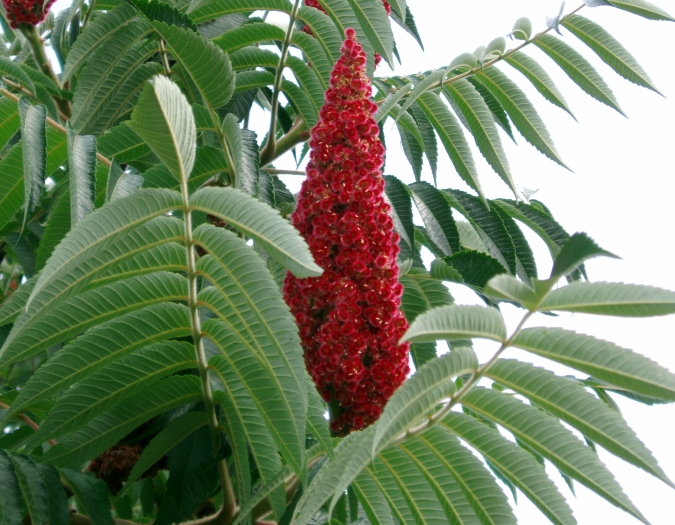Staghorn Sumac
(Rhus typhina)
Staghorn Sumac (Rhus typhina)
/
/

Daniel Fuchs
CC BY-SA 2.5
















































































Estimated Native Range
Summary
Staghorn Sumac is valued for its ease of maintenance and its ability to thrive in a range of conditions, including dry and poor soils where other plants may struggle. It is often used in naturalistic plantings, as a border shrub, or for erosion control on slopes. While it can be aggressive due to its suckering habit, this can be managed with regular pruning. In cultivation, it prefers full sun to part shade and can tolerate a range of soil drainage conditions. However, its potential invasiveness should be considered before planting outside its native range.CC BY-SA 4.0
Plant Description
- Plant Type: Shrub, Tree
- Height: 15-25 feet
- Width: 20-30 feet
- Growth Rate: Rapid
- Flower Color: Yellow, Green
- Flowering Season: Summer
- Leaf Retention: Deciduous
Growth Requirements
- Sun: Full Sun, Part Shade
- Water: Low, Medium
- Drainage: Slow, Medium, Fast
Common Uses
Bee Garden, Bird Garden, Butterfly Garden, Deer Resistant, Drought Tolerant, Edible*Disclaimer: Easyscape's listed plant edibility is for informational use. Always verify the safety and proper identification of any plant before consumption., Erosion Control, Fire Resistant, Hummingbird Garden, Low Maintenance, Rabbit Resistant, Salt Tolerant
Natural Habitat
Open woodlands and forest edges
Other Names
Common Names: Virginia Sumac, Stag’s Horn Sumach, Velvet Sumac, Vinegar Tree, Kolben-Sumach, Essigbaum, Sumac Amarante, Sumac Devirginie, Sumac Amaranthe, Sumac Vinaigrier
Scientific Names: , Rhus typhina, Rhus hirta, Rhus hirta f. typhina, Rhus typhina var. laciniata, Rhus typhina f. dissecta, Rhus gracilis, Rhus typhia, Datisca hirta, Rhus typhina f. laciniata
GBIF Accepted Name: Rhus typhina L.